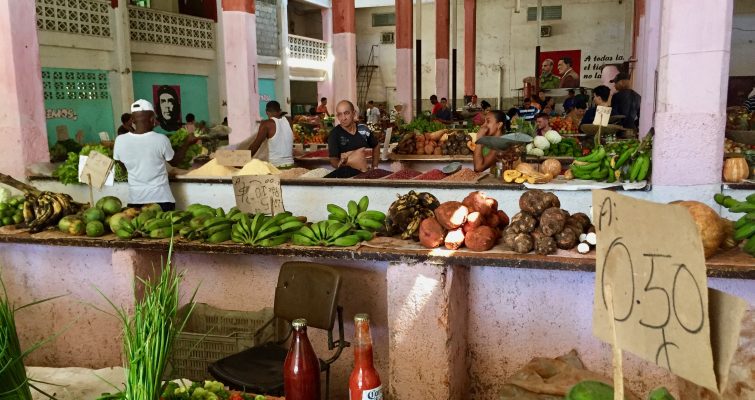
Cuba for vegetarians and vegans
I’ve had dietary restrictions on the brain lately! I get enough inquiries about this, I figured it was worth writing about. So I’m going to explain how I handle food for my vegetarian/vegan travelers. If you’re going to Cuba on your own, this may give you an idea of what you’ll be dealing with.
If people are interested, I can also do a post on visiting Cuba gluten-free, or nut-free, or kosher, etc.
Breakfast
My first tip is, vegans should bring nut butter or a good cereal.
For most of my trips, we stay at private B&Bs. The breakfast is pretty standard: eggs, toast, butter, jam, fruit, maybe yogurt, maybe sweet rolls or cake, maybe an avocado, maybe a small ham and cheese sandwich. For vegans, that means just toast, jam, and fruit. Maybe avocado. So for a heartier breakfast, I recommend bringing some nut butter or your favorite cereal.
And if you’re getting bored of the standard breakfast, stop by a produce market. Look around for fruits you haven’t tried yet – maybe even something you’ve never heard of – and add that to your breakfast spread! I do that all the time.
If you’re staying at a hotel, it really depends on the hotel… so I’d call ahead and ask about their breakfast options.
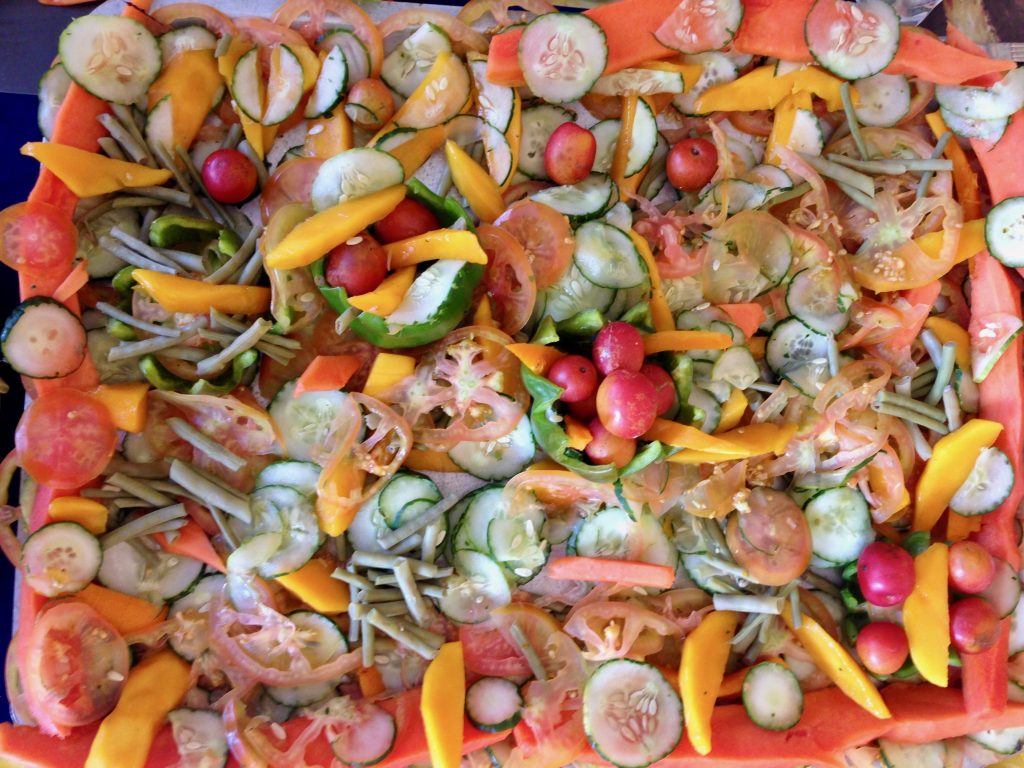
Some friends invited me over for a special lunch in Jaguey Grande, Cuba. One of them made this salad and used mango and cucumber slices to spell “Matt” along the top. Touching and funny. Look closely and you’ll see it!
Lunch and dinner
I’m focusing this discussion on Cuban cuisine. If you want, you can easily find a plate of pasta anywhere in Cuba. There’s lots of pizza, too. But to me, that’s not a solution for vegetarians/vegans in Cuba. When I lead a trip, my goal is for my travelers to experience authentic Cuban cuisine, not pizza and pasta.
When it comes to traditional Cuban cuisine, most vegetarian options are also vegan. There are a few soups that incorporate cheese. But apart from that, I really don’t see dishes made with eggs or dairy.
A traditional Cuban meal revolves around meat – to the point that restaurants don’t offer vegetarian main dishes, only side dishes. Common side dishes are black beans, rice, rice and black beans, salad, sautéed vegetables, and maybe squash. There are usually starchy vegetables on the menu – such as yuca, taro, sweet potato, or plantain – boiled, fried, and/or served as fritters or chips. There may also be squash soup, cheese soup, or vegetable soup. And on rare occasions, I see a vegetarian garbanzo dish.
You can make a decent meal of these side dishes, but they’re not what you’d call exciting. Most are just a single ingredient with little or no seasoning. After a day or two, that gets very repetitive! So to me, this is a fallback option when we can’t get anything more unusual.
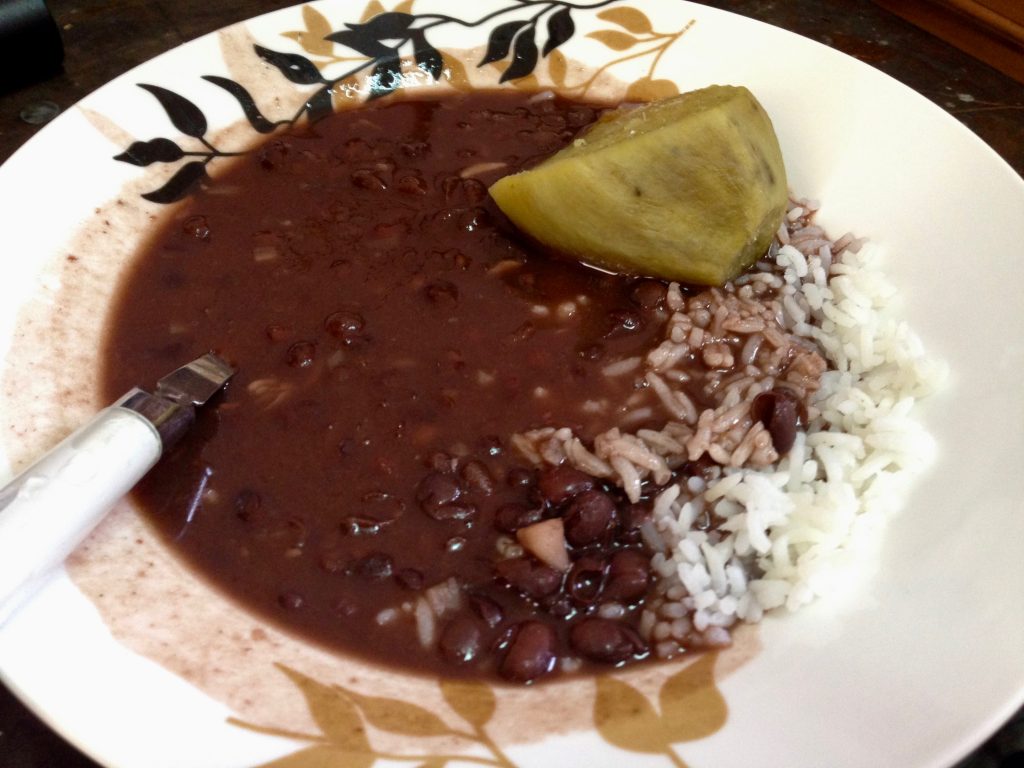
A bowl of beans and rice with a slice of sweet potato. This is a typical Cuban meal, except it’s missing the obligatory big piece of meat. I had this for lunch with a collective of artists in Cienfuegos, Cuba. One of the artists’ wives always cooks for the whole group, and it’s always delicious.
Several other Cuban dishes either are vegetarian to begin with, or they’re traditionally not but can be adapted. I have friends who make garbanzos, okra, white or red bean stew, or lentils. Often I’ll pay one of them to prepare a home-cooked meal for us, some dish we wouldn’t otherwise get to try during the trip. This is a great experience for us, and it also shares tourism money with people who don’t usually get any. Win-win.
In additional to traditional Cuban cuisine, there are fusion restaurants doing more eclectic things with traditional Cuban ingredients and dishes. These sometimes incorporate cheese or dairy. But I pay attention to my favorite restaurants, so I know which ones have vegetarian/vegan options on the menu. I’m also friendly with some chefs and restaurant owners. So in a pinch, I may call one up and ask, “What could you do for my vegetarians?” Or, “Would you mind making a vegan version of X?”
In a city where I don’t have connections like that, I make them. A couple years ago, I had a couple vegetarians coming with me to Matanzas for the national LGBT Pride celebration. I didn’t know the restaurants in Matanzas very well. So prior to the trip, I visited restaurants, reviewed the menus, and spoke to the chefs. One chef volunteered to prepare a vegetarian ajiaco, an everything-but-the-kitchen-sink country stew. It’s an important dish in the national cuisine. And just like that, his restaurant got my business! I also left a big tip to thank him for the trouble. Again, win-win.
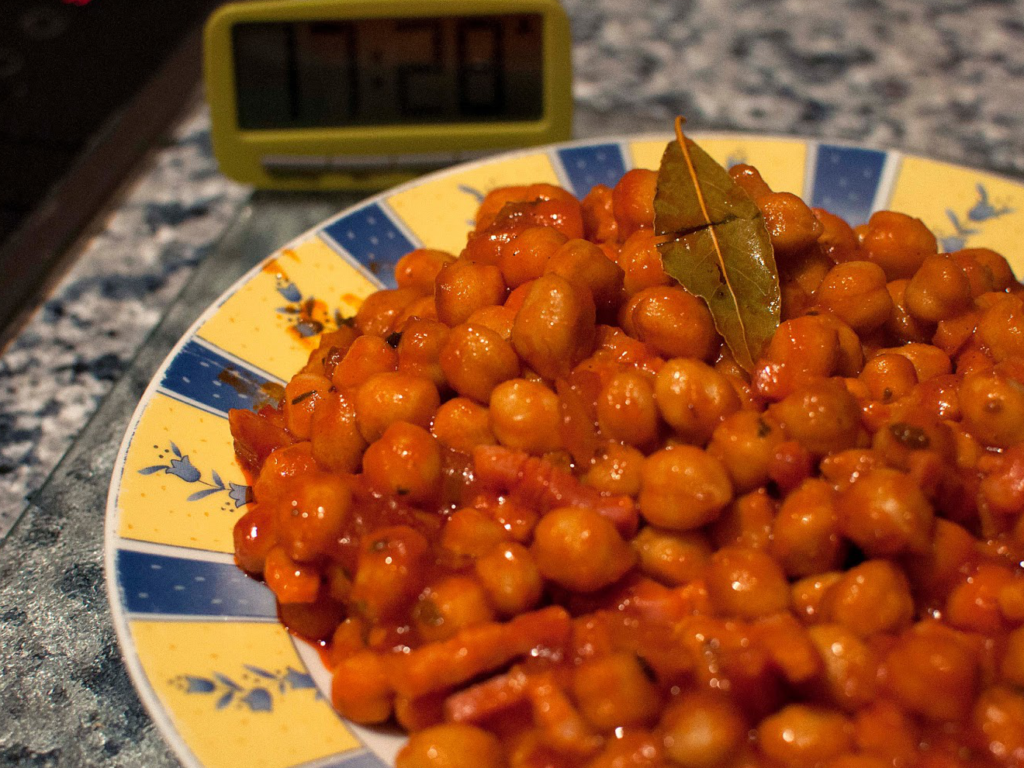
This photo of garbanzo frito, a dish of garbanzos cooked with tomatoes, comes to you courtesy of milrecetas.com. Often it’s made with meat, but sometimes you can get it without.
Dessert
For vegetarians, dessert is easy. Eat whatever you want.
For vegans: Many desserts have eggs and dairy. But there are plenty of vegan Cuban desserts worth trying! Cubans make sweets from coconut, grapefruit rind, guava, or papaya cooked in syrup. There’s also mermelada, a fruity pudding with the consistency of applesauce. I often see it made from guava or mango. All these fruit desserts are served with cheese, but you can always ask them to hold the cheese.
There are also typical sweets made with peanuts or sesame, avaialble from street vendors or at produce markets. If you’re lucky, you’ll also encounter coquito: a ball of shredded coconut covered in hard caramel. And I know one vendor who sells a similar candy with peanut filling instead of coconut.
Another street snack is pan con guayaba, a little sandwich with a slice of guava jelly. You can get it with or without cheese. You’d typically get this at a walk-up stand where someone’s selling sandwiches through the window.
Last but not least: If you’re ever in Baracoa, on the northern coast of Guantánamo province, try the cucurucho! This is a local delicacy of shredded coconut cooked with sugar and almonds or fruit. It gets a bit of a smoky flavor, very distinctive. It’s sold in a cone made out of a palm leaf, so it’s hard to miss.
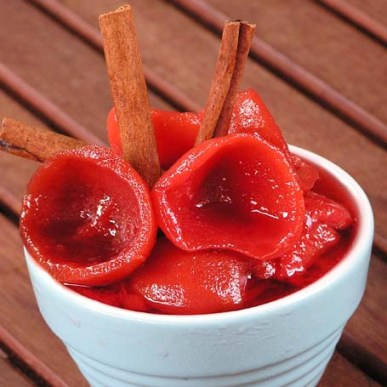
These guava halves are cooked in syrup with cinnamon. They’re often served with cheese, but I like them just as well without. This photo courtesy of El Sabor de mi Solar.
Potential problems
Cubans do not always take our dietary needs seriously. Once, I asked a friend about vegetarian options. He said, “Oh, we’ll just cook the stew with a sausage in the pot, and then before we serve it, we’ll take the sausage out and they’ll never know!” There was a huge cultural barrier there. First, he was convinced that food doesn’t taste good without meat. So I had to explain that some people like their food without meat flavors. Second, he didn’t understand why anyone would avoid meat. So I had to explain all the reasons someone might be vegetarian or vegan – from health, to religion, and so on and so forth. All this was so far off his radar, it showed me just how far these ideas are from his cultural context.
So let’s say you show up somewhere and ask, “Hey, is this vegetarian?” Will they tell you the truth? Or will they blow it off like my friend did? This is where it helps to speak great Spanish – as you’re more likely to be taken seriously. And it also helps to be a good judge of character, so you can sniff out when someone’s bullshitting you.
The fancier the restaurant, the more pride they take in catering to an international clientele, and the more likely they’ll be ready for vegetarians and vegans. So in trendy gourmet restaurants, no problem. It’s in restaurants serving traditional food where you might have a problem. And the less touristy the restaurant, the less likely they’ll be ready for us.
Also, when I tell a traditional Cuban restaurant I’ve got a vegetarian or vegan, I almost always get the same initial response: “We can make them some sautéed vegetables with rice and a side salad!” Someone has convinced all of Cuba that this is the perfect meal for vegetarians. Left to their own devices, they’d feed it to you every meal for a week. It can take some gentle pushing to get beyond their first impulse. I might say, “Oh crap! We’ve already got plans to have that for lunch. What else could we do for dinner?” This gentle pushing is much easier in advance, not when you’re sitting there ready to order dinner. It gives them time to think through the problem, buy ingredients, and (for some dishes) start preparing it earlier in the day.
Caveats: Be careful of the squash soup, black beans, and rice and beans. They’re normally vegetarian, but not always, and the squash soup may have dairy. If you’re eating something fried, you may want to ask if they used vegetable oil or pork fat. Vegetable oil is the norm, but you never know. Last but not least: Crema de Aurora is cream of tomato soup – may not actually contain dairy – and Crema de Virginia is a ham and cheese soup. These can be confusing on the menu, because they’re often translated as “Aurora cream” and “Virginia cream.”

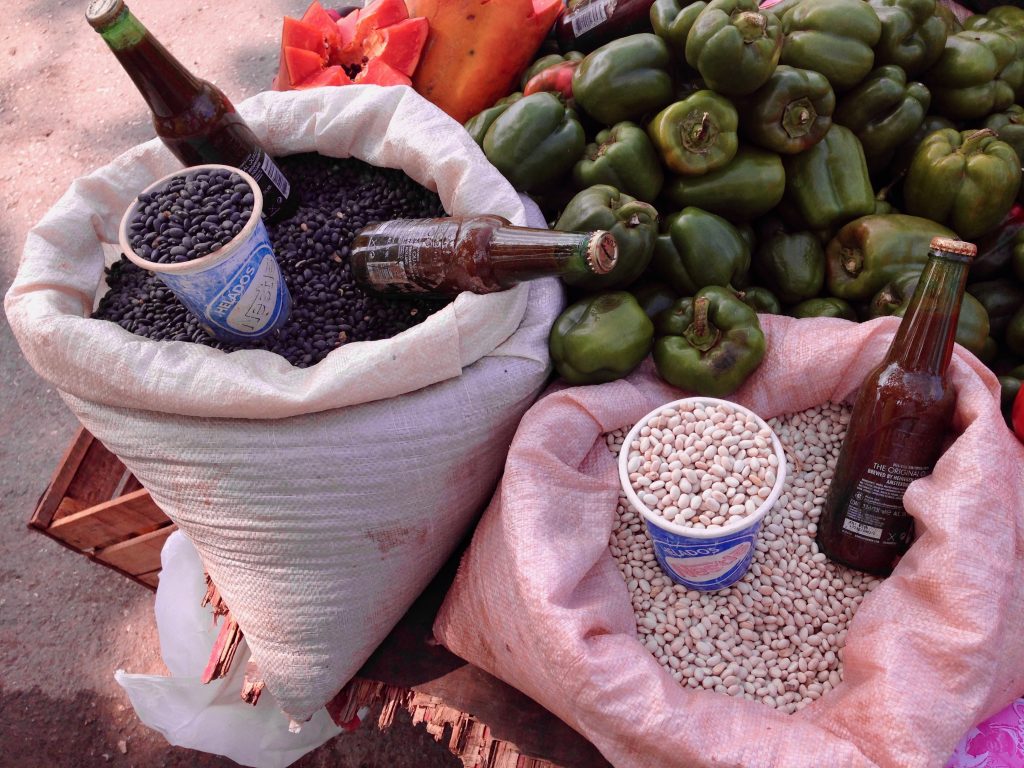



2 Comments